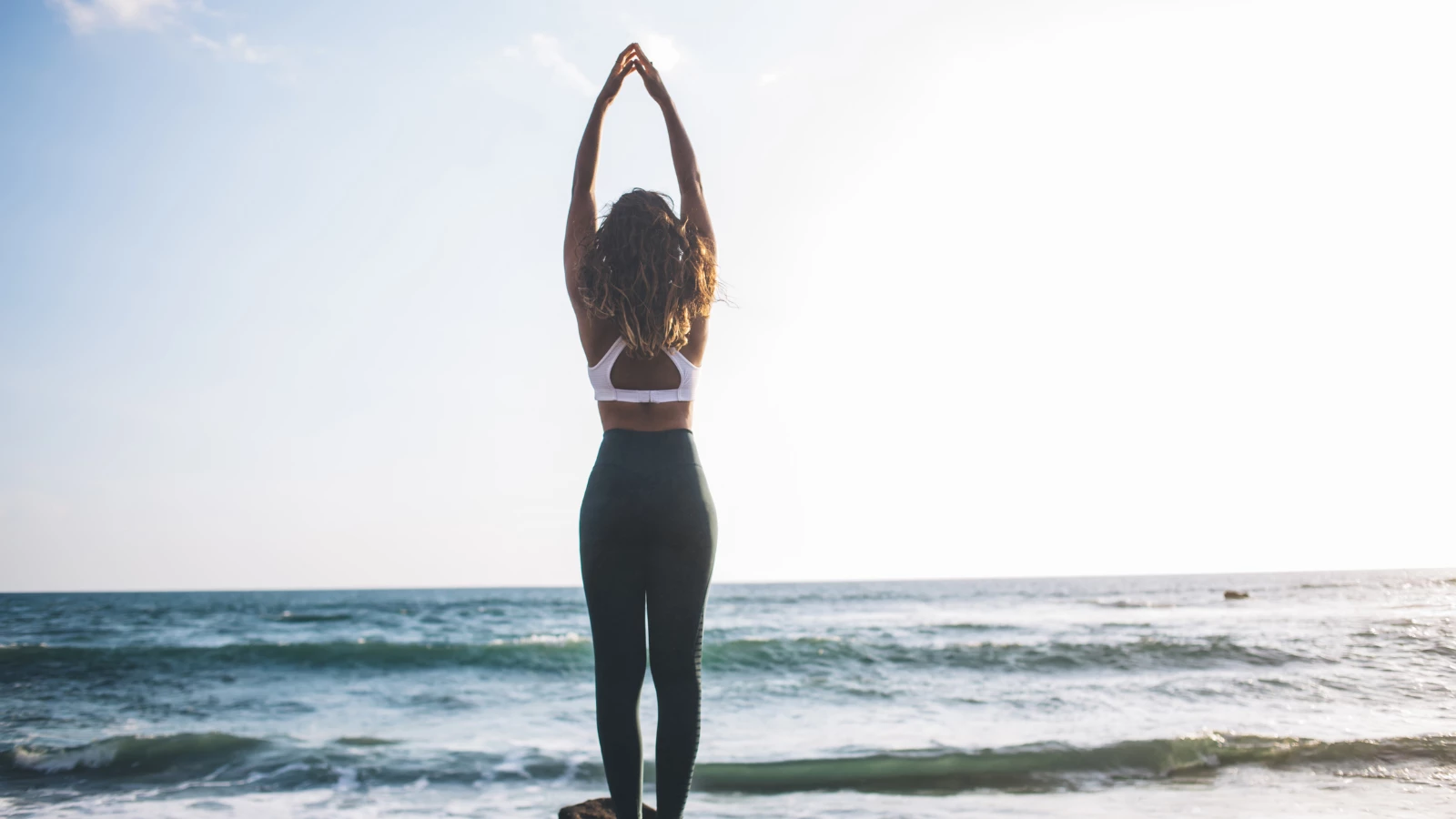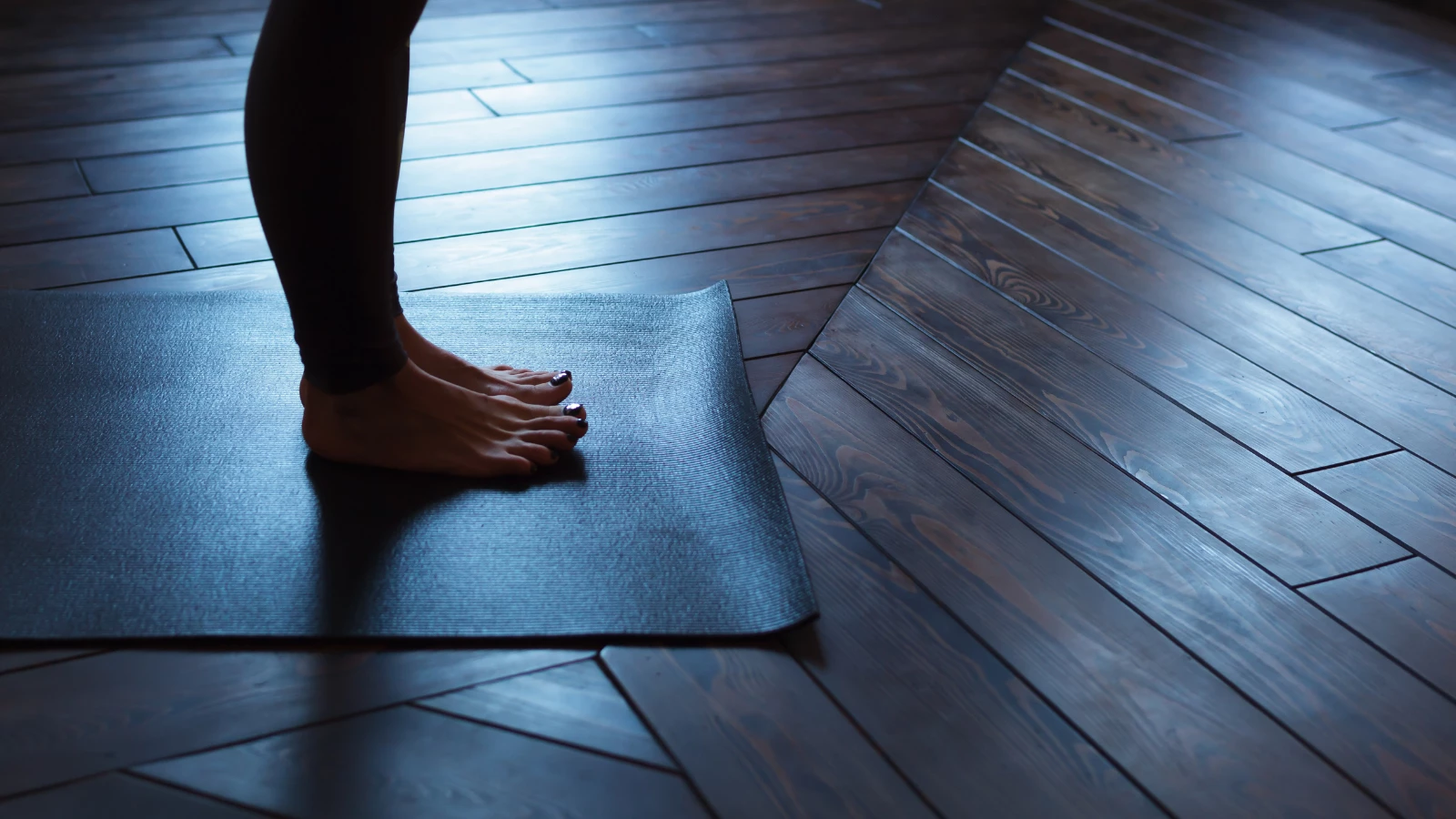Uplift Your Yoga Practice by Grounding Down

Words are important, and what we say when we teach matters. So kudos to yoga teacher and blogger Michelle Myhre, who wrote a thoughtful essay in Elephant Journal on cleaning up the language of yoga teaching by getting rid of verbal filler. I’m so much in agreement that I’m considering putting an elastic band on my wrist and snapping it, gently, of course, every time I hear myself say: “now we’re going to . . . ”
But we parted ways when Myhre suggested that yoga teachers cleanse the word “down” from their vocabularies. After citing a number of instances such as “down-hearted,” “down in the dumps,” “down at the mouth,” and for computers, just “down,” she writes:
“Is ‘down’ a seed we want to plant in our students’ minds? Is ‘down’ a samskara we want in our own heads? Is ‘down’ confident? Is it uplifted, high, vitalized, soaring, and joyful? The ubiquitous ‘down’ needs an overhaul.”
Oh, not so fast. True, there’s no need to say: “press your hands down into the floor,” when you can’t possibly press them up. But that doesn’t make “down” dispensable.
There’s No “Up” without “Down”
Philosophically, up and down, like all opposites, are two sides of the same coin. Without a down, there is no up. We might prefer the bright, sunny, exuberant feelings associated with “up,” but as a direction, it’s no more inherently good than down is bad. And in practical terms, the down usually has to come first, as in the action I’ll describe in this post: press down into your big toe mounds and outer arches in order to lift your inner ankles.

How pleasant then, to learn that our word “down” comes from the Old English word dun, meaning “down, moor, height, hill, mountain.” You can, for example, go for a hike and be “up on the downs.” And at first, when you weren’t on the downs, you were “ofdune,” meaning “from the hill.” Gradually the “of” was dropped, and the meaning of “down” migrated into its opposite, collecting a host of negative, and only a few positive associations, such as the relaxed and peaceful “settle down” and “calm down.” What a downer.
How to Uplift Yourself While Grounding Down in Yoga Practice 
- Stand in Mountain Pose (Tadasana) with your feet hips-distance apart. Line up the outer arches with the outside edges of your mat. Press down with your outer arches. (Photo Right-Yes, come this far on to your outer arches to find out what pressing down feels like.)
- To strengthen the sensation, sway slowly toward the right, so more of your weight rests on your outer right foot. Then sway toward the left. Gently move your weight back into your outer heels, then allow it to roll toward your little toes. Bring your weight back to the center.
- Then slowly, still pressing into your outer arches, bring your big toe mounds back to the floor, and press them down.
- Now hinge into Standing Forward Bend Pose (Uttanasana) with whatever height you need under your hands to allow you to keep your knees straight. You could use two yoga blocks at any height or place your hands on a chair seat if that is helpful.
- Look at your inner ankles, and as you press down with your outer feet, lift your inner ankles away from the floor. Keep the lift in your ankles, and lift your inner knees.
- If you’re pressing down strongly enough, you’ll feel a lift that runs all the way up your inner leg.
- Want more intensity? Take your palms to the outsides of your calves and press in.
Once you have the essential action of lifting your inner ankle, see if you can maintain it in standing poses. Try Tree Pose (Vrksasana) Vrksasana or Extended Hand-to-Big-Toe Pose (Utthita Hasta Padangustasana) to see the difference you can make by pressing down to lift up.
Then try it in Downward Facing Dog Pose (Adho Mukha Svanasana). You won’t be able to press your outer arches down, but once you know how to lift your inner ankles, you’ll find new energy in your legs.
Also, read...
Warrior I Pose: 5 Strengthening Variations
Deepening Your Home Yoga Practice: An Interview with Judith Hanson Lasater
4 Easy Ways to Use a Sandbag in Yoga Practice
Related courses
Breath as Medicine: Yogic Breathing for Vital Aging
Yoga and Myofascial Release: Releasing Chronic Tension with the Bodymind Ballwork Method

Eve Johnson taught Iyengar Yoga for 18 years before being introduced to Spinefulness in 2016. Convinced by the logic, clarity, and effectiveness of Spinefulness alignment, she took the teacher training course and was certified in July 2018. Eve teaches Spineful Yoga over Zoom and offers an online Spinefulness Foundations course. For course information, go to http://spinefulness.ca.



